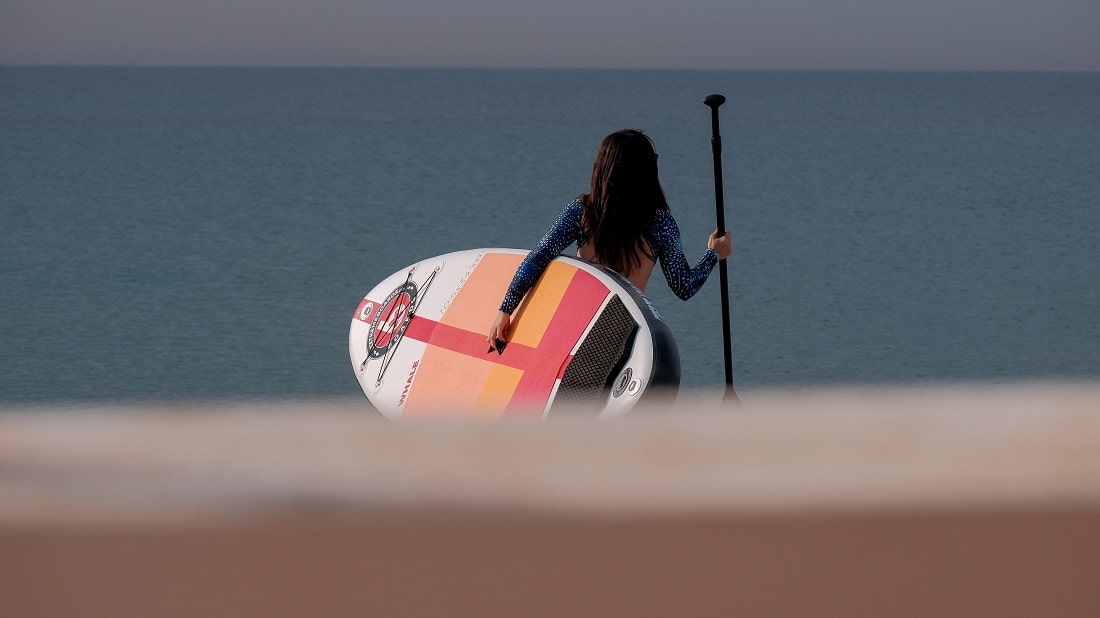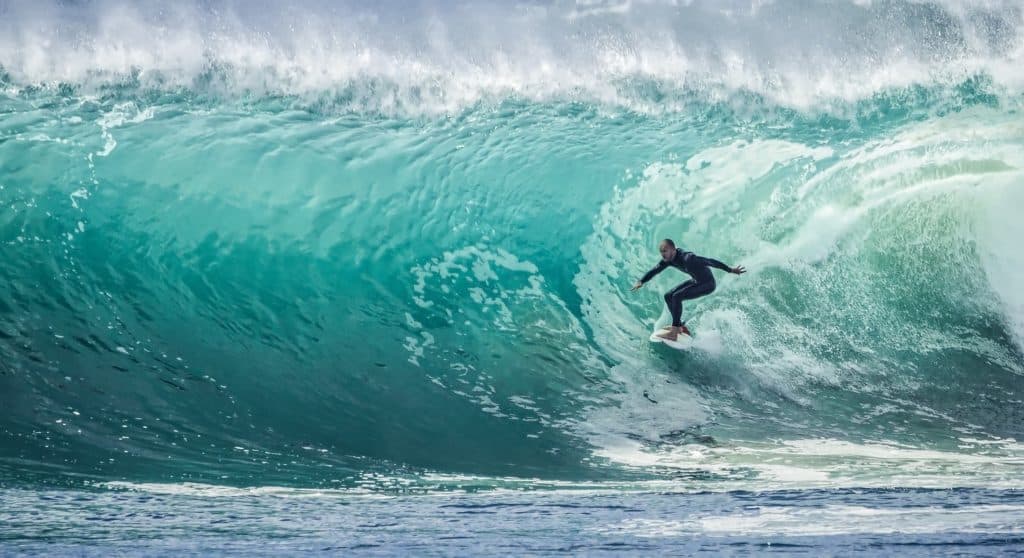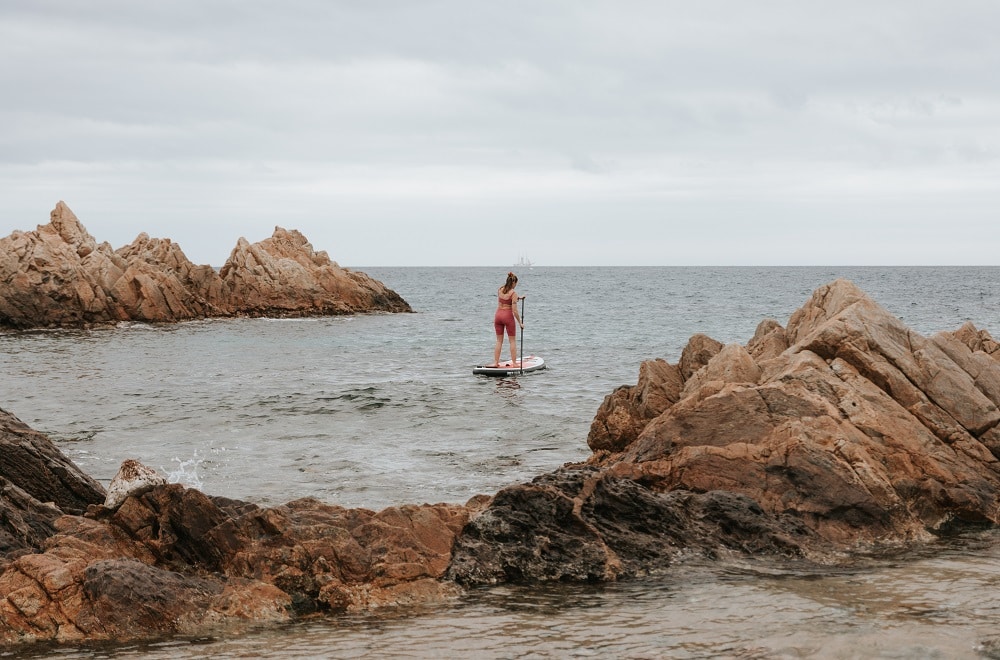Surfing and paddle surfing. Differences


Surfing and paddle surfing (also known as stand-up paddleboarding or SUP) are both water sports that involve riding waves while standing on a board. However, there are big differences
In terms of difficulty, many people find that paddle surfing is easier to learn than traditional surfing. This is because paddle surfing involves standing on a larger, more stable board and using a paddle to propel oneself through the water, whereas traditional surfing requires balance, coordination, and wave-reading skills to catch and ride waves. If you are more interested in paddle boarding you can check this paddle board shop in barcelona.
Additionally, paddle surfing can be done on calm or flat water, which makes it easier for beginners to practice and gain confidence before attempting to ride waves. In contrast, traditional surfing typically requires waves of a certain size and shape to be rideable, which can make it more challenging for beginners to find suitable conditions. If you want to buy a sup inflatable board you can check this Barcelona brand boards.
While both surfing and paddle surfing require balance and coordination, paddle surfing is generally considered to be easier to learn for beginners. However, it’s worth noting that both activities require practice and dedication in order to develop the skills necessary to catch and ride waves successfully. With time and practice, both surfing and paddle surfing can be incredibly rewarding and enjoyable water sports for people of all ages and skill levels.

Surfing involves riding waves with a traditional surfboard, which typically ranges in size from 5-10 feet long and is designed to be ridden while lying or kneeling down, and then standing up once the wave is caught. Surfing requires a high level of balance, coordination, and wave-reading skills. The rider must paddle into the wave, stand up on the board, and use their weight and body position to maintain balance and ride the wave. Because the board is relatively small and narrow, it can be challenging for beginners to maintain balance and control while riding the wave. This is an extreme sport!
Paddle surfing, on the other hand, involves riding waves or not. You can just paddle slowly and enjoy the trip. If you want to surf a wave you will have a larger and more stable board that is designed to be ridden while standing up. These boards are typically 9-12 feet long and are wider and thicker than traditional surfboards, which provides greater stability and buoyancy. Paddle surfers use a paddle to move through the water and catch waves, which can make it easier for beginners to maneuver and control the board. Additionally, paddle surfing can also be done on calm or flat water, which allows beginners to practice and gain confidence before attempting to ride waves.

Let’s compare the difference between Paddle Surfing and regular surfing
Board Size and Design:
- Surfboards are typically shorter and narrower, ranging from 5-10 feet in length.
- Paddleboards for paddle surfing are generally longer and wider, ranging from 9-12 feet in length.
- Paddleboards are designed to be stable and easy to balance on, with a wide and flat deck, while surfboards are designed to be maneuverable and responsive, with a pointed nose and narrow tail.
Ease of Learning:
- Paddle surfing is generally considered to be easier to learn for beginners due to the stability and buoyancy of the larger board and the use of a paddle to propel oneself through the water.
- Surfing can be more challenging to learn for beginners, as it requires a higher level of balance, coordination, and wave-reading skills.
Technique:
- In paddle surfing, riders use a paddle to move through the water and catch waves, and then stand up on the board once they have caught the wave. Paddling and steering are done with the paddle, while balance is maintained by shifting weight and adjusting body position.
- In surfing, riders use their arms to paddle and catch waves, and then stand up on the board once they have caught the wave. Balance is maintained by shifting weight and adjusting body position, with the feet acting as a pivot point for turning the board.
Conditions:
- Paddle surfing can be done on calm or flat water, as well as in small waves, making it a versatile activity that can be practiced in a variety of conditions.
- Surfing typically requires waves of a certain size and shape to be rideable, which can limit the number of suitable locations and conditions for beginners to practice.
Physical Demands:
- Paddle surfing requires upper body strength and endurance to paddle and maneuver the board, as well as lower body strength to maintain balance and control while standing.
- Surfing requires upper body strength and endurance to paddle and catch waves, as well as core and leg strength to maintain balance and control while riding the wave.
Conclusion differences surfing with paddle surf
While both surfing and paddle surfing require practice and dedication to master, paddle surfing is generally considered to be easier to learn for beginners due to the stability of the board, the use of a paddle, and the ability to practice on calm or flat water. However, personal preference, individual skill level, and access to suitable locations and conditions will ultimately determine which activity is best for each individual. If you want to see a video of best surfing you can click on the link.

